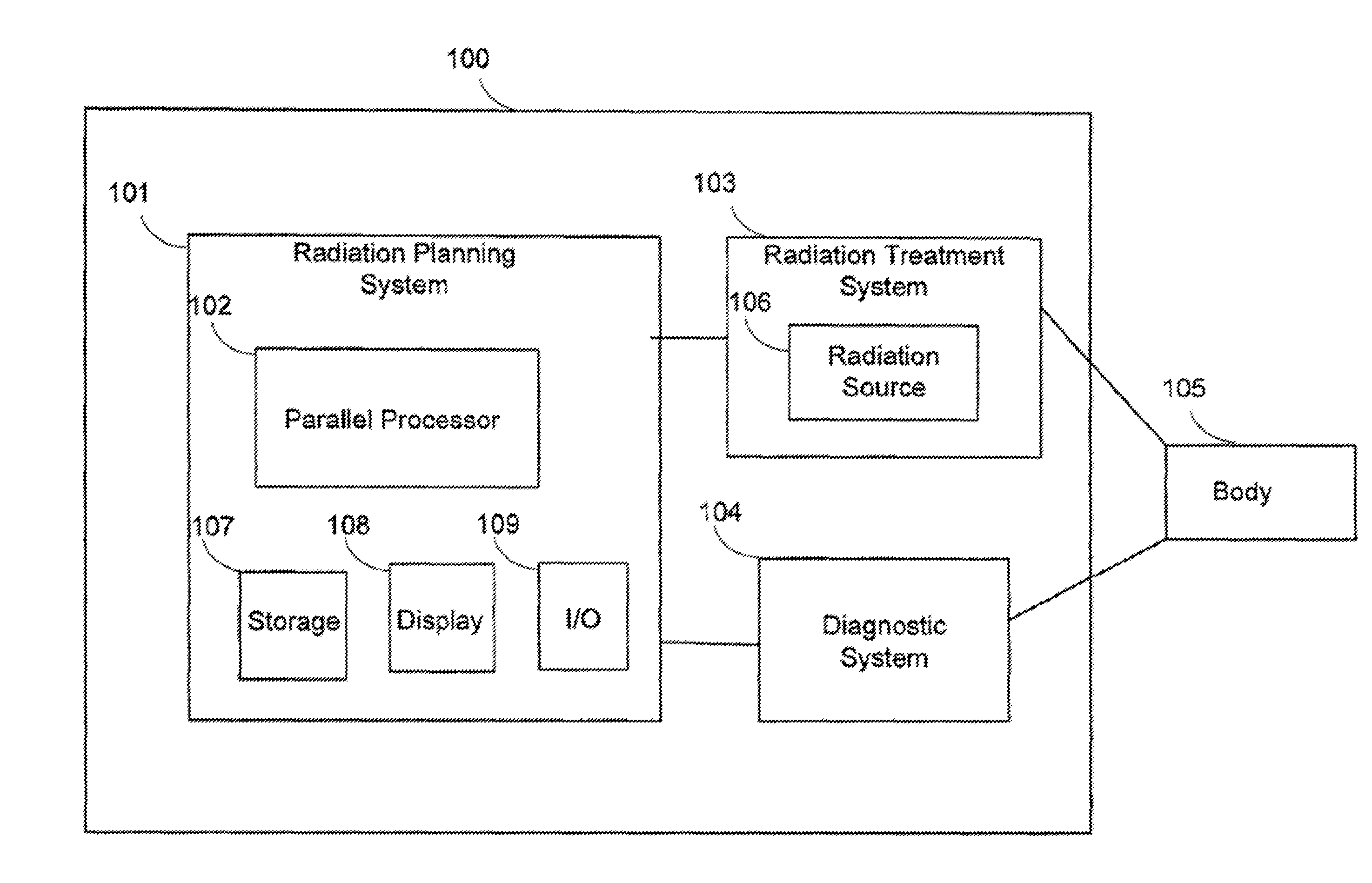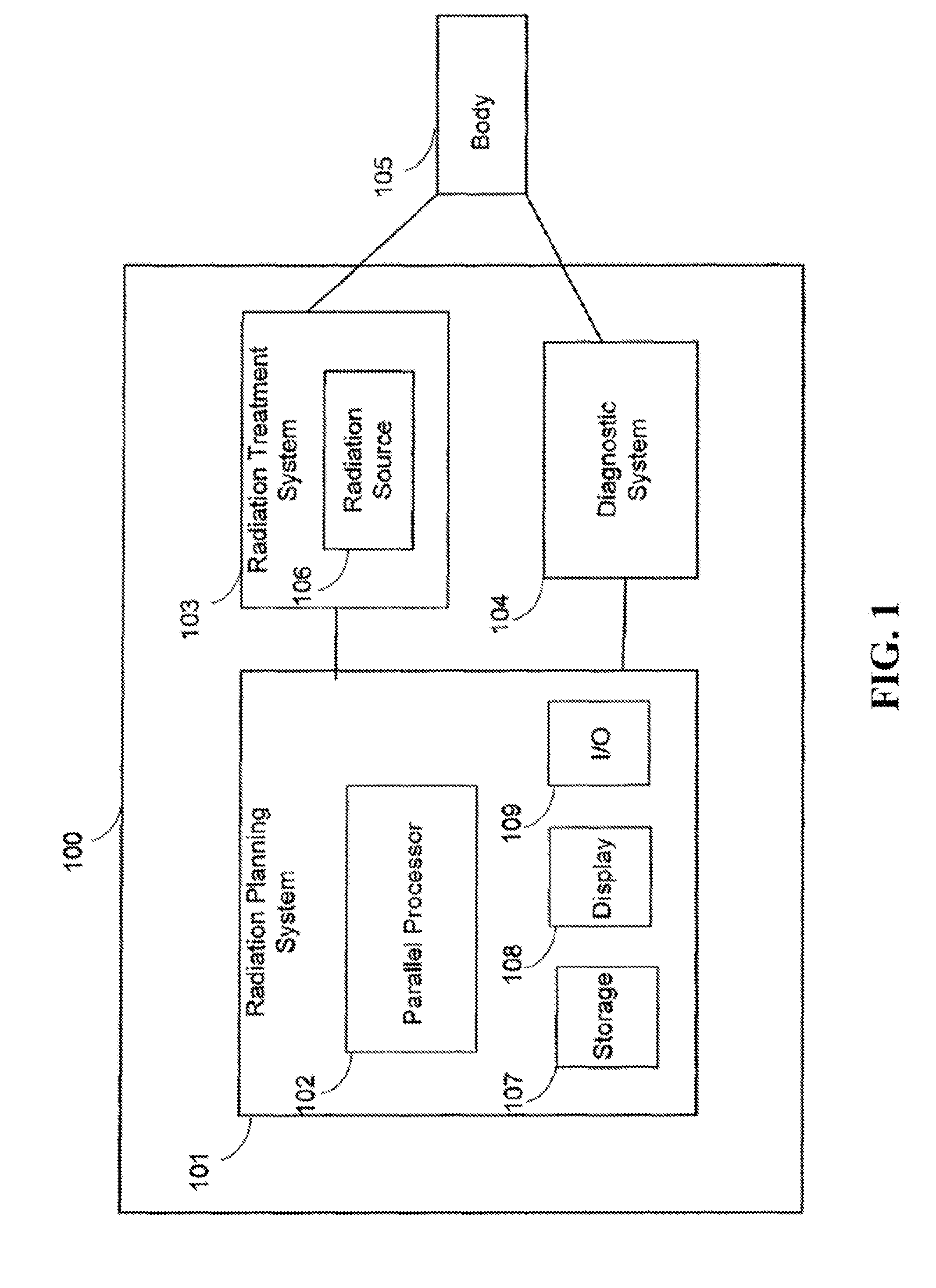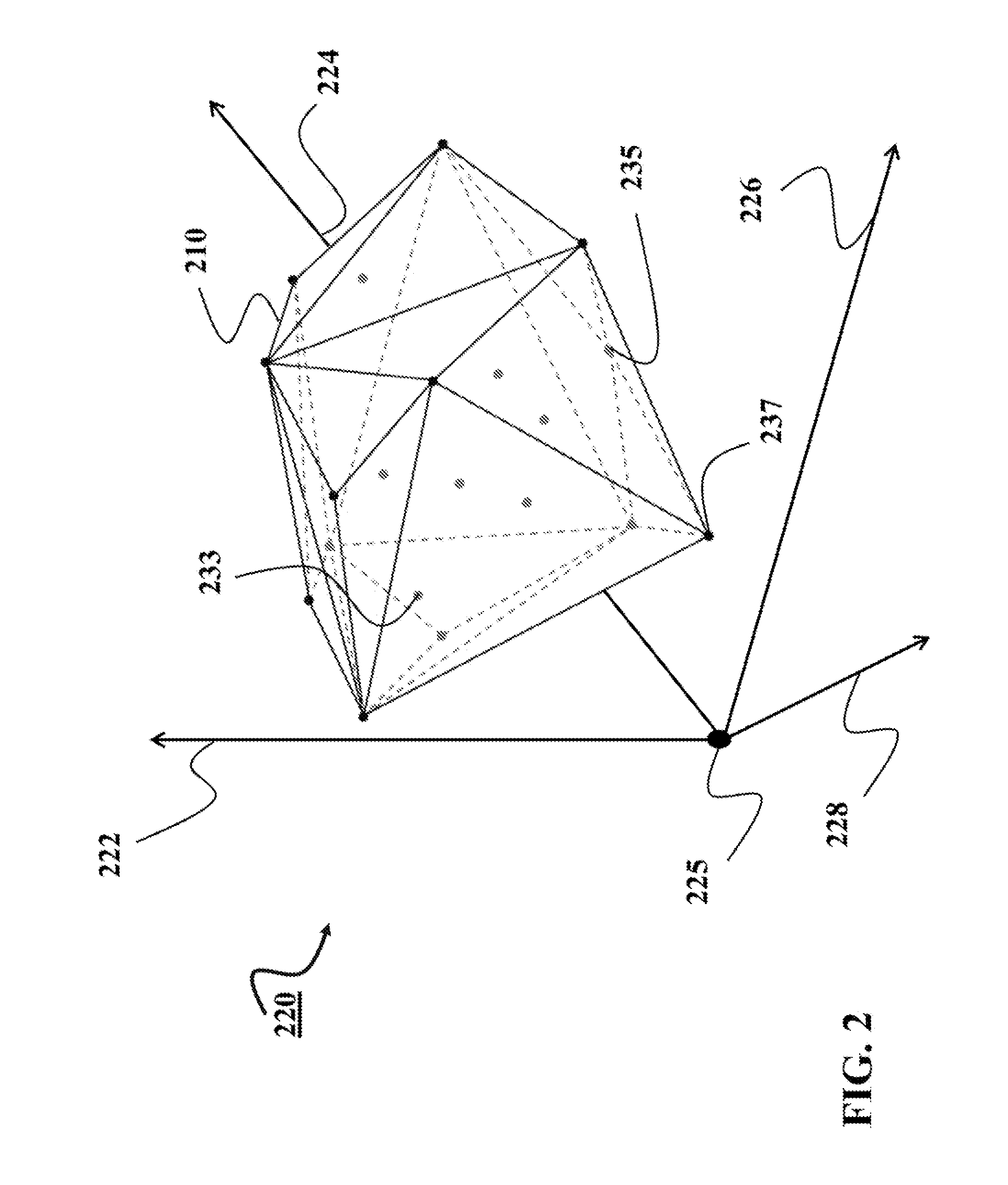Multi-Criteria Optimization in Particle Beam Dose Optimization
a particle beam and optimization technology, applied in the field of particle beam dose optimization, can solve the problems of physical inability to meet all the constraints in a prescription, inability to solve optimization problems, and difficulty in understanding and analysing representations of pareto surfaces, and achieve the effect of minimizing the weighted norm of total irradiation
- Summary
- Abstract
- Description
- Claims
- Application Information
AI Technical Summary
Benefits of technology
Problems solved by technology
Method used
Image
Examples
Embodiment Construction
[0026]FIG. 1 is a schematic diagram of a radiation therapy system 100 according to one embodiment of the invention. The radiation therapy system 100 includes a radiation treatment planning system 101, which further includes a parallel processor 102. The parallel processor is adapted to receive input information concerning a body 105 having an intended radiation treatment volume that can be represented as a volume of voxels. The parallel processor 102 is also adapted to generate output information for providing radiation treatment to the intended radiation treatment volume of the body.
[0027]The radiation treatment planning system 101 can further include a storage 107, a display 108, and input / output (I / O) devices and interfaces 109. The storage 107 may be, for example, a hard disk drive, a CD-ROM drive, a DVD drive, a flash drive, etc. The display 108 may be, for example, a liquid crystal display (LCD), a cathode ray tube (CRT) monitor, a plasma display, etc. I / O device 109 may inclu...
PUM
 Login to View More
Login to View More Abstract
Description
Claims
Application Information
 Login to View More
Login to View More - R&D
- Intellectual Property
- Life Sciences
- Materials
- Tech Scout
- Unparalleled Data Quality
- Higher Quality Content
- 60% Fewer Hallucinations
Browse by: Latest US Patents, China's latest patents, Technical Efficacy Thesaurus, Application Domain, Technology Topic, Popular Technical Reports.
© 2025 PatSnap. All rights reserved.Legal|Privacy policy|Modern Slavery Act Transparency Statement|Sitemap|About US| Contact US: help@patsnap.com



